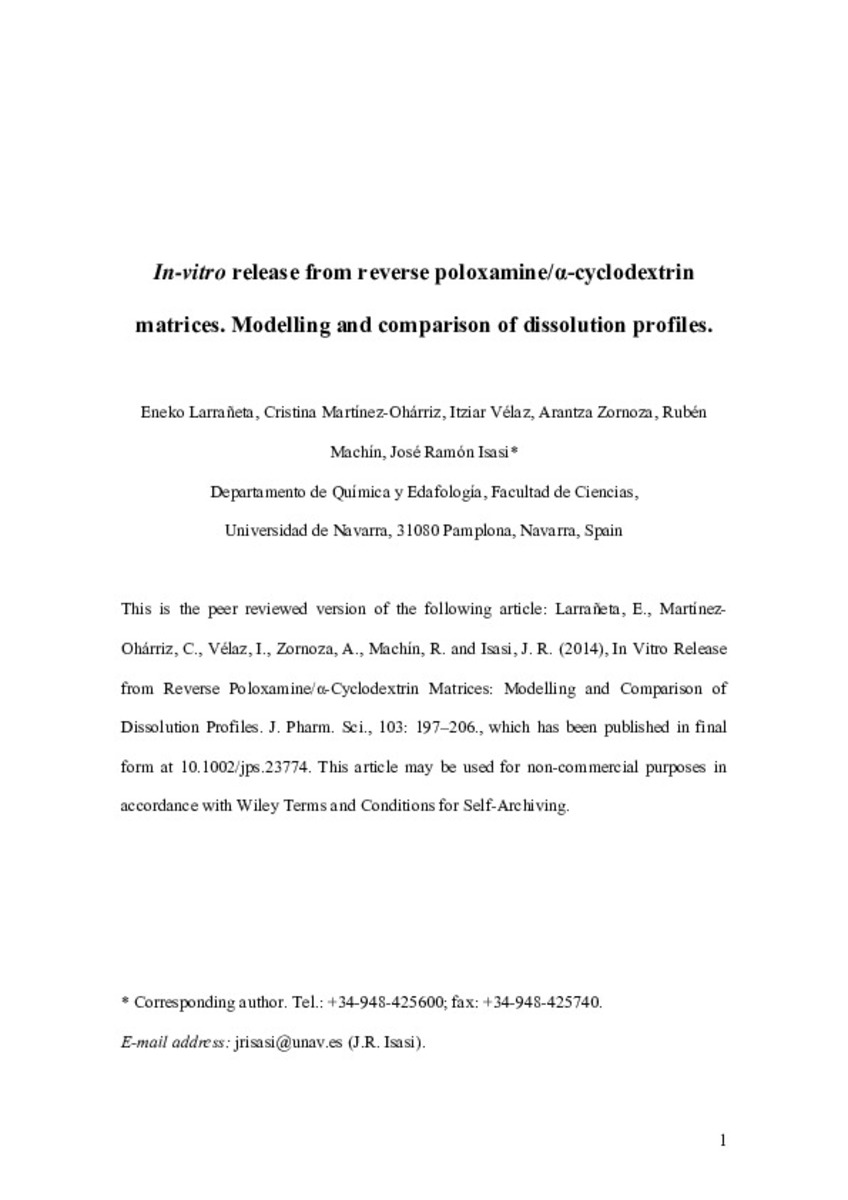In-vitro release from reverse poloxamine/α-cyclodextrin matrices. Modelling and comparison of dissolution profiles
Keywords:
Materias Investigacion::Química::Química clínica
Materias Investigacion::Ciencias de la vida::Bioquímica
Controlled release
Erosion kinetics
Supramolecular gels
Self-assembly
Cyclodextrins
Project:
Universidad de Navarra (PIUNA)
Ministerio de Ciencia e Innovación (project MAT2007-65752)
Editorial note:
This is the peer reviewed version of the following article: Larrañeta E, Martínez-Ohárriz C, Vélaz I, Zornoza A, Machín R, Isasi JR. In-vitro release from reverse poloxamine/α-cyclodextrin matrices. Modelling and comparison of dissolution profiles. J Pharm Pharm Sci 2014;103(1):197–206, which has been published in final form at http://dx.doi.org/10.1002/jps.23774. This article may be used for non-commercial purposes in accordance with Wiley Terms and Conditions for Self-Archiving.
Citation:
Larrañeta E, Martínez-Ohárriz C, Vélaz I, Zornoza A, Machín R, Isasi JR. In-vitro release from reverse poloxamine/α-cyclodextrin matrices. Modelling and comparison of dissolution profiles. J Pharm Pharm Sci 2014;103(1):197–206
Statistics and impact
0 citas en

0 citas en

Items in Dadun are protected by copyright, with all rights reserved, unless otherwise indicated.











